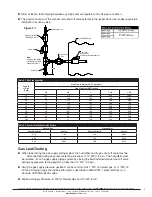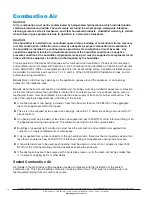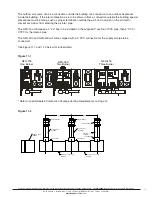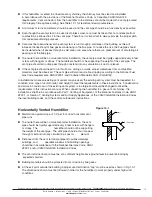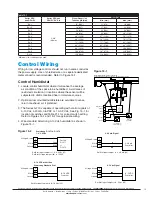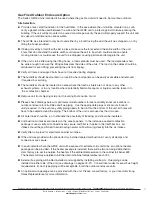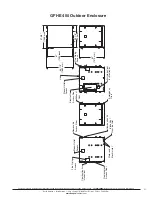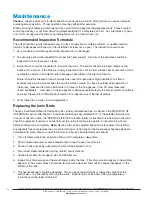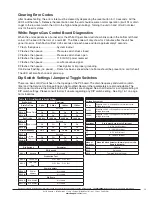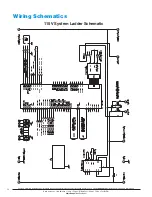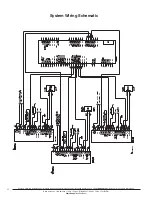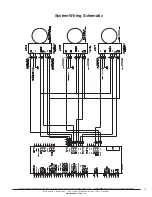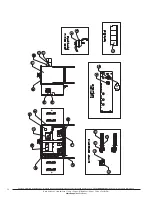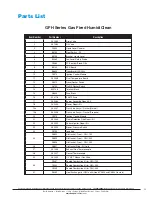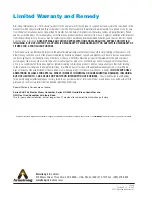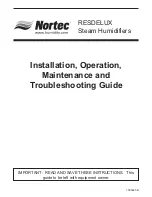
North America • Latin America • India • Europe / Middle East / Africa • China • Pacific Rim
armstrong
international.com
Designs, materials, weights and performance ratings are approximate and subject to change without notice. Visit
armstrong
international.com for up-to-date information.
23
Principal of Operation
The Gas Fired HumidiClean humidifier converts ordinary tap water or purified water to steam for distribution
to raise the relative humidity level. The demand for humidity is sensed by a humidistat, which sends a control
signal to the Gas Fired HumidiClean.
When power is initially supplied to the unit from the circuit breaker, all LEDs will illuminate for 5 seconds. The
“POWER” LED will remain on and the unit’s fill valve solenoid is energized to allow water to enter the tank at
a rate of 3 gal/min. Note: If the water level in the tank is above the low water level when power is applied, the
drain valve will be energized to drain the water below the low water level.
Once the water level in the tank has reached the low water switch, the unit will make sure all of its safety
circuits are satisfied. The “STEAM GENERATION” LED will then energize, and the unit will initialize its
precombustion checks and ignite.
The water fill solenoid continues to be activated until the water level in the tank has energized the high
water switch. Note: If fill or drain valves are not energized when power is first applied check display LEDs for
diagnostic code. See DIAGNOSTICS section.
The radiant burner will remain on for 5 minutes to preheat the water inside the tank.
After the 5 minute heat-up time, the Gas Fired HumidiClean will continue to produce steam based on the
demand signal from the humidistat. If the demand signal drops below 2% or the high limit/sail switch circuit
opens, the burner will disengage and the “STEAM GENERATION” LED will turn off. Note: If the humidifier
shuts off due to low humidistat demand, a demand signal of 20% or greater is needed to re-light and turn on
the “STEAM GENERATION” LED.
The Gas Fired HumidiClean will produce steam continuously and refill the tank with water when the low water
level is reached. These fill intervals will be started as defined in the software of the printed circuit board and
be shut off by the high water switch.
The PC Board generates a Pulse Width Modulated (PWM) signal and sends this signal to the burner package
to achieve a modulating output based on the signal demand from the humidistat.
As the Gas Fired HumidiClean continues to produce steam, the unit will accumulate and memorize the steam
generation time for the purpose of defining a drain cycle and service life (this memory is not affected by power
outages). When the Gas Fired HumidiClean burner has accumulated the steam generation time set by the
drain frequency DIP switch setting, the unit activates the drain solenoid and begins draining the tank. When
the water level drops below the low water electrode, the burner will disengage. The printed circuit board
controls the drain cycle and can be field modified. See DIP Switch Settings Section. Once the unit has timed
out of the drain cycle and all of the switches are still in position to generate steam, the water fill solenoid
switch is activated to fill the tank and the cycle starts over again.
Completing a Service Life Cycle
When the 90% of the selected service time has accumulated, the “SERVICE LIFE” LED on the control panel
will start to flash (blink on and off). See DIP Switch Settings Section. It will continue to produce steam on
demand for the remaining Service Life. During these hours of operation, the Gas Fired HumidiClean will
display a flashing “SERVICE LIFE” LED. After 100% of the selected Service Life has accumulated, in hours of
steam generation, the unit will shut down by draining the tank as described above and not respond to any call
for humidity.
End of Season Drain
If at any time during normal operation there is not a demand for humidity for a continuous 72 hour period,
the Gas Fired HumidiClean drains the tank and the PC Board initiates a drying cycle by cycling the heat
exchanger for short intervals in order to dry the ionic beds.
If the unit is to be manually shut down for end of season service, the service technician should manually drain
the unit by removing the 2” NPT plug from the drip leg of the tank, remove the beds, and physically dry the
tank.

